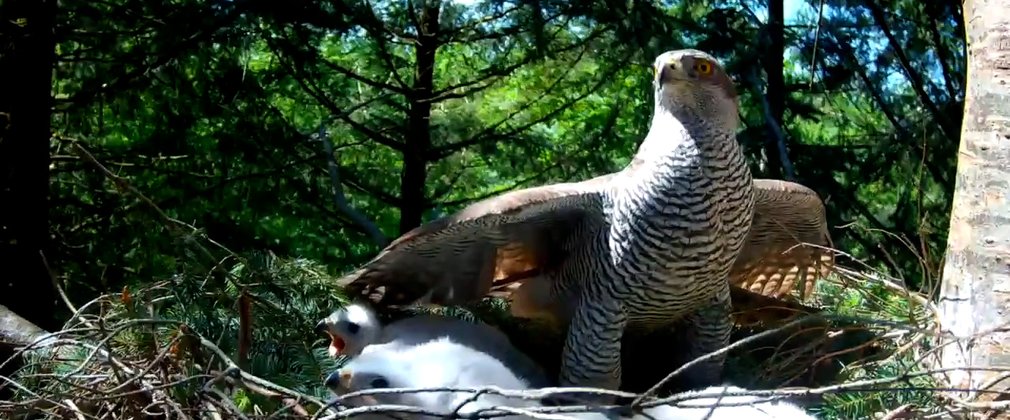
Goshawks back from the brink in southern England
Wildlife experts from Forestry England have confirmed that the New Forest is now a stronghold for goshawk, one of England’s most elusive birds of prey, and the population is beginning to expand to new nesting sites across Hampshire and Dorset. After being absent for over 120 years, the first pair of goshawks returned to the New Forest in 2002.Twenty years on these birds are now flourishing with 45 pairs recorded this year.
A team from Forestry England closely monitors goshawk numbers and breeding success in the forest, spending hundreds of hours observing pairing behaviour and monitoring nests. Before the chicks fledge, the team ring, measure and weigh them to assess their health and whether the forest offers the right conditions to sustain the population. Rings recovered from these birds provide a picture of where the population is spreading to beyond the area.
Despite living in the New Forest all year-round goshawks are notoriously difficult to spot. Extremely agile fliers, they silently weave between trees and shrubs in pursuit of prey, earning them the nickname “phantoms of the forest”. To try and get a closer look at these elusive birds, this year the team also used a nest camera to follow a pair of goshawks as they successfully raised and fledged three chicks at the top of one of the forest’s tall trees.
Studying the footage gave the Forestry England team a unique insight into these birds’ behaviour with some surprising new observations uncovered. Often thought of as being an apex predator, unlikely to be attacked by other species the footage showed that the nest, with both eggs and then chicks in it, came under sustained and repeated attacks from a tawny owl nesting nearby.
Another first for the team revealed by the nest camera footage came during one of the hottest days in June. It showed the male parent becoming concerned about the effect of the heat on his chicks. He responded by opening his wings and shading the chicks for long periods of time.
Evidence from the nest-camera also confirmed that goshawk eat a wide variety of prey with a range of items brought into the nest to feed the young including squirrels, small birds, and small mammals. The size difference between the larger female and smaller male allows them to both find different sources of food, ensuring that their young are well fed.
Andy Page, Head of Wildlife, Forestry England South District, said:
“The return of goshawks to the New Forest is a real conservation success story. Once on the brink of extinction in England it’s really rewarding to have been involved in supporting their return over the last twenty years. With around forty-five pairs now in the New Forest I expect the population to significantly expand out across Hampshire and nearby Dorset over the next decade.”
“As a thriving apex predator today, these birds tell us a lot about the health of this forest and the wide diversity of wildlife it supports. The more we learn about these fascinating birds, the more we can support a range of species across our forests.”
Notes to Editor
- Images are available here. Please credit Forestry England/Crown copyright.
- Forestry England manages and cares for the nation’s 1,500 woods and forests, with over 363 million visits per year. As England’s largest land manager, we shape landscapes and enhance forests for people to enjoy, wildlife to flourish and businesses to grow. We are continuing the work we have already started to make the nation’s forests resilient to climate change and by 2026 we will:
- create at least 6,000 more hectares where we integrate wilding activities in our productive forests.
- increase the diversity of visitors to the nation’s forests and have one million hours of high-quality volunteer time given to the nation’s forests
- plant at least 2,000 hectares of new, high quality, predominantly broadleaf woodlands
For more information visit forestryengland.uk. Forestry England is an agency of the Forestry Commission.
Media Contact:
Susan Smith, Media Officer, South Forest District, Forestry England
t: 07384 878434, e: susan.smith@forestryengland.uk
